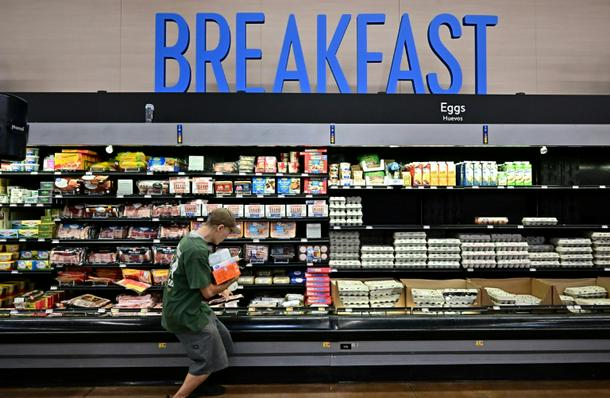
US inflation cooled last month in line with expectations
Washington (AFP) - The US Federal Reserve’s preferred inflation measure cooled further last month and now sits just above its long-term target, according to government data published Thursday, shortly before the presidential election.
The personal consumption expenditures (PCE) price index eased to 2.1 percent in the 12 months to September, down from 2.3 percent in August, the Commerce Department announced in a statement.
This was in line with the median forecast from economists surveyed by Dow Jones Newswires and The Wall Street Journal, and keeps the Fed en route to its long-term target of two percent.
Given the surge in post-pandemic inflation, the fact that headline inflation now sits just a tenth of a percentage point away from the Fed’s target is a significant achievement.
The Fed – the independent US central bank – is responsible for tackling inflation and unemployment by hiking or lowering interest rates to affect demand.
In an interview with CNBC Thursday, White House National Economic Advisor Lael Brainard said Thursday’s September PCE data was an “important milestone,” noting that inflation was close to target while economic growth was strong and the unemployment rate remained low.
“That’s a combination that people just didn’t think that we were going to see,” she said. “And it’s a real testament to how much progress the American economy has made, and a real boon to American consumers and working families.”
Policymakers have made progress in tackling higher inflation by keeping inflation-adjusted interest rates high. But US consumers remain unhappy with the higher cost of living, and the topic remains front of mind for many voters ahead of the election on November 5.
Both the Democratic candidate, Kamala Harris, and Republican contender Donald Trump, have floated proposals they say will help bring down the cost of essential everyday items like food and gas.
The PCE price index rose 0.2 percent between August and September, the Commerce Department said. This was in line with economists’ expectations.
Excluding the volatile food and energy segments, the core PCE price index was unchanged at 2.7 percent from a year ago in September, slightly above expectations, and up 0.3 percent from a month earlier.
Personal income and disposable income both rose 0.3 percent last month, while the rate of personal saving as a percentage of disposable income fell slightly to 4.6 percent, suggesting that consumers spent more of their money in September than they did a month earlier.
Thursday’s data release likely keeps the Fed on track to continue cutting interest rates next week, as it looks to boost demand in the world’s largest economy after a prolonged period of tightening.
Futures traders see a probability of around 95 percent that the Fed will cut rates by a quarter of a percentage point next week, according to CME Group data.
“From the Fed’s perspective, these data show enough progress on headline PCE prices for policymakers to continue cutting rates,” economists at High Frequency Economics wrote in a note to clients.
“The strong spending and income growth tells them there is no need to cut aggressively to avert a recession,” they added.